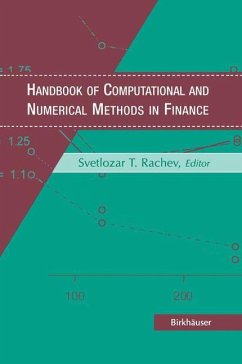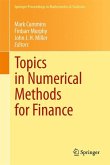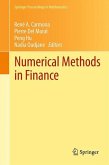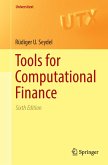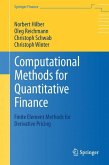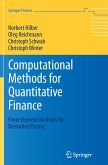The subject of numerical methods in finance has recently emerged as a new discipline at the intersection of probability theory, finance, and numerical analysis. The methods employed bridge the gap between financial theory and computational practice, and provide solutions for complex problems that are difficult to solve by traditional analytical methods. Although numerical methods in finance have been studied intensively in recent years, many theoretical and practical financial aspects have yet to be explored. This volume presents current research and survey articles focusing on various numerical methods in finance.
Key topics covered include: methodological issues, i.e., genetic algorithms, neural networks, Monte-Carlo methods, finite difference methods, stochastic portfolio optimization, as well as the application of other computational and numerical methods in finance and risk management. The book is designed for the academic community and will also serve professional investors.
Numerical Methods in Finance have recently emerged as a new discipline at the intersection of probability theory, finance and numerical analysis. They bridge the gap between financial theory and computational practice and provide solutions to problems where analytical methods are often non-applicable. Numerical methods are more and more used in several topics of financial analy sis: computation of complex derivatives; market, credit and operational risk assess ment, asset liability management, optimal portfolio theory, financial econometrics and others. Although numerical methods in finance have been studied intensively in recent years, many theoretical and practical financial aspects have yet to be explored. This volume presents current research focusing on various numerical methods in finance. The contributions cover methodological issues. Genetic Algorithms, Neural Net works, Monte-Carlo methods, Finite Difference Methods, Stochastic Portfolio Opti mization as well as the application of other numerical methods in finance and risk management. As editor, I am grateful to the contributors for their fruitful collaboration. I would particularly like to thankStefan Trueck and Carlo Marinelli for the excellent editorial assistance received over the progress of this project. Thomas Plum did a splendid word-processingjob in preparing the manuscript. lowe much to George Anastassiou (ConsultantEditor, Birkhauser) and Ann Kostant Executive Editor, Mathematics and Physics, Birkhauser for their help and encouragement.
Hinweis: Dieser Artikel kann nur an eine deutsche Lieferadresse ausgeliefert werden.
Key topics covered include: methodological issues, i.e., genetic algorithms, neural networks, Monte-Carlo methods, finite difference methods, stochastic portfolio optimization, as well as the application of other computational and numerical methods in finance and risk management. The book is designed for the academic community and will also serve professional investors.
Numerical Methods in Finance have recently emerged as a new discipline at the intersection of probability theory, finance and numerical analysis. They bridge the gap between financial theory and computational practice and provide solutions to problems where analytical methods are often non-applicable. Numerical methods are more and more used in several topics of financial analy sis: computation of complex derivatives; market, credit and operational risk assess ment, asset liability management, optimal portfolio theory, financial econometrics and others. Although numerical methods in finance have been studied intensively in recent years, many theoretical and practical financial aspects have yet to be explored. This volume presents current research focusing on various numerical methods in finance. The contributions cover methodological issues. Genetic Algorithms, Neural Net works, Monte-Carlo methods, Finite Difference Methods, Stochastic Portfolio Opti mization as well as the application of other numerical methods in finance and risk management. As editor, I am grateful to the contributors for their fruitful collaboration. I would particularly like to thankStefan Trueck and Carlo Marinelli for the excellent editorial assistance received over the progress of this project. Thomas Plum did a splendid word-processingjob in preparing the manuscript. lowe much to George Anastassiou (ConsultantEditor, Birkhauser) and Ann Kostant Executive Editor, Mathematics and Physics, Birkhauser for their help and encouragement.
Hinweis: Dieser Artikel kann nur an eine deutsche Lieferadresse ausgeliefert werden.
"The title of this book my be somewhat misleading-- as an edited volume, it contains several papers on some issues in quantitative finance. Most contributions have a computational/numerical slant. It is no surprise that several papers concentrate on heavy-tailed models, in particular Pareto-type models figure prominently. For me, the highlight is the paper by Kohatsu-Higa and Montero on "Malliavan Calculus in Finance". This seventy plus page paper gives a very readable introduction to this imporatnt field of current research. A further enjoyable paper is "Modern Heuirstics for Finance Problems: A Survey of Selected Mehtods and Applications: by Schlottmann and Seese."
---Publication of the International Statistical Institute
---Publication of the International Statistical Institute

